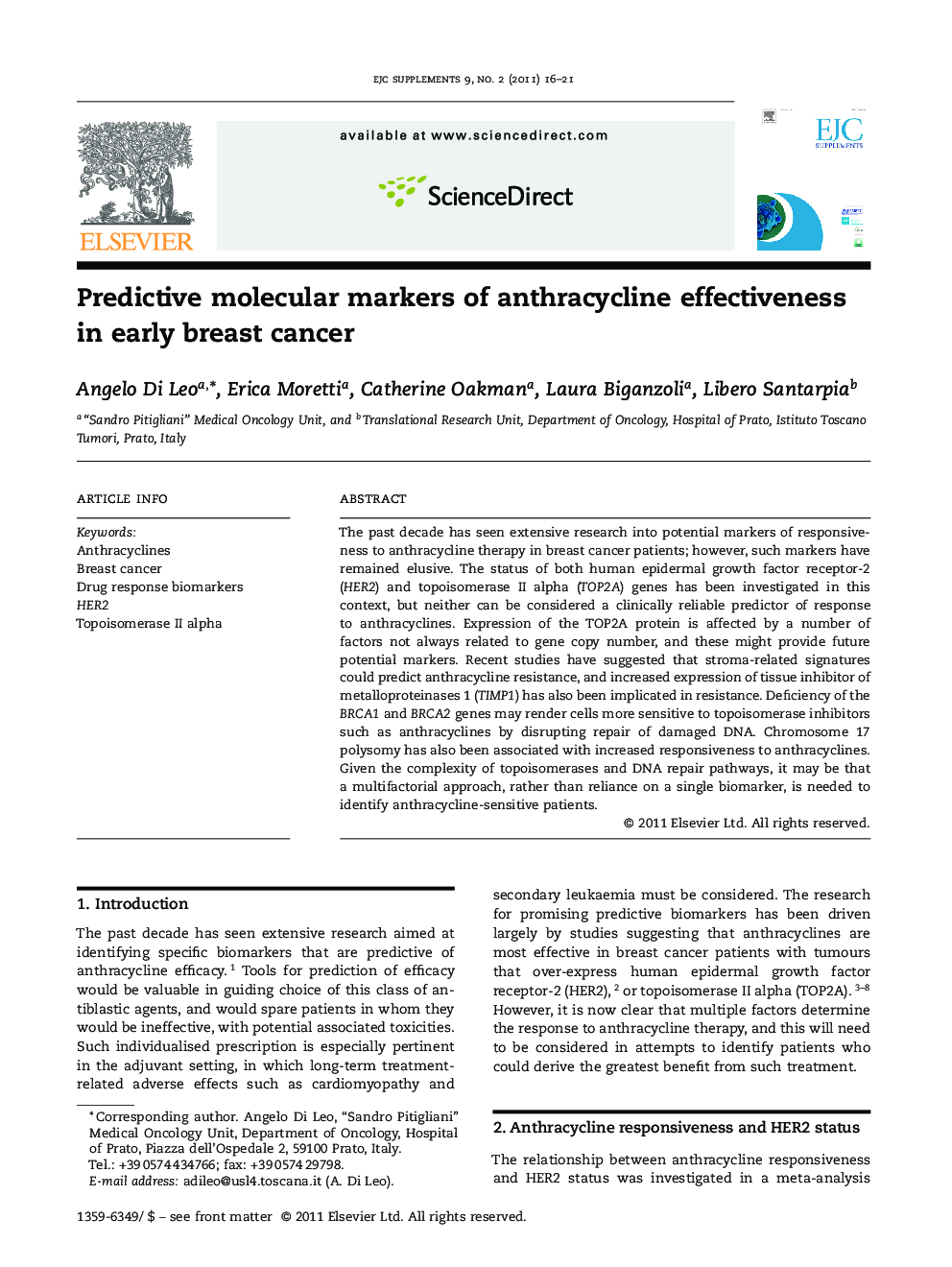| Article ID | Journal | Published Year | Pages | File Type |
|---|---|---|---|---|
| 2127883 | European Journal of Cancer Supplements | 2011 | 6 Pages |
The past decade has seen extensive research into potential markers of responsiveness to anthracycline therapy in breast cancer patients; however, such markers have remained elusive. The status of both human epidermal growth factor receptor-2 (HER2) and topoisomerase II alpha (TOP2A) genes has been investigated in this context, but neither can be considered a clinically reliable predictor of response to anthracyclines. Expression of the TOP2A protein is affected by a number of factors not always related to gene copy number, and these might provide future potential markers. Recent studies have suggested that stroma-related signatures could predict anthracycline resistance, and increased expression of tissue inhibitor of metalloproteinases 1 (TIMP1) has also been implicated in resistance. Deficiency of the BRCA1 and BRCA2 genes may render cells more sensitive to topoisomerase inhibitors such as anthracyclines by disrupting repair of damaged DNA. Chromosome 17 polysomy has also been associated with increased responsiveness to anthracyclines. Given the complexity of topoisomerases and DNA repair pathways, it may be that a multifactorial approach, rather than reliance on a single biomarker, is needed to identify anthracycline-sensitive patients.
